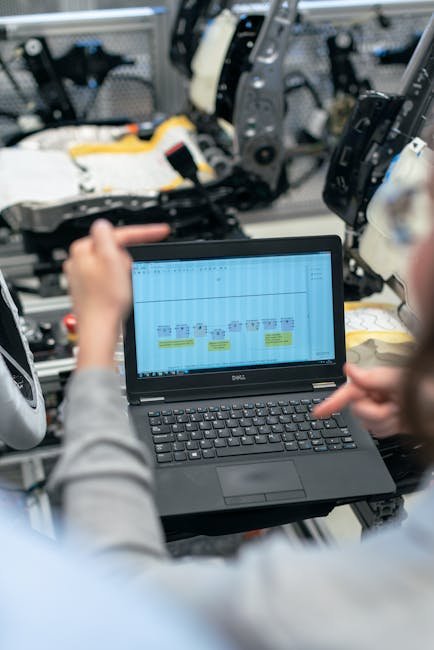Process Reengineering: Adapting to Digital Needs 🌐
In today’s fast-paced digital world, businesses are constantly seeking ways to stay ahead. One effective strategy is process reengineering. But what exactly does this entail, and how can it help your business thrive in the digital age? Let’s dive into the essentials of process reengineering and discover how it can meet your digital needs. 🚀
Table of Contents
1. Introduction to Process Reengineering
2. Why Process Reengineering is Crucial in the Digital Era
3. Steps to Successfully Reengineer Your Processes
4. Common Challenges and Solutions
5. Conclusion
6. FAQs
Introduction to Process Reengineering
Process reengineering is all about fundamentally rethinking and redesigning the way work is done to better support an organization’s mission and reduce costs. This isn’t just about tinkering at the edges; it’s about making bold changes to achieve dramatic improvements in critical performance measures. 📈
Why Process Reengineering is Crucial in the Digital Era 💡
In the digital era, customer expectations are higher than ever. They demand faster services, personalized experiences, and seamless interactions. Here’s why process reengineering is a game-changer:
1. Enhanced Efficiency: By eliminating redundancies and automating tasks, companies can achieve greater efficiency and faster turnaround times.
2. Improved Customer Experience: Streamlined processes lead to more consistent and satisfying customer interactions, boosting loyalty and retention.
3. Increased Agility: With reengineered processes, businesses can adapt quicker to market changes, giving them a competitive edge.
Steps to Successfully Reengineer Your Processes 🔧
Wondering how to start? Here are some steps to guide you:
1. Identify Processes for Reengineering: Begin by identifying which processes are outdated or inefficient. Focus on those that directly impact customer satisfaction and operational efficiency.
2. Analyze and Map Current Processes: Understand the current state of your processes. Map them out to visualize where changes are needed.
3. Design the New Process: Develop a blueprint for the new process that incorporates digital tools and technologies. Aim for simplification and automation where possible.
4. Implement Changes: Roll out the new process, ensuring all stakeholders are on board and equipped with the necessary training.
5. Monitor and Iterate: After implementation, continuously monitor the process and make adjustments as needed. Feedback loops are crucial for ongoing improvement.
Common Challenges and Solutions 🚧
Reengineering isn’t without its hurdles. Here are some common challenges and how to overcome them:
Resistance to Change: Employees may be hesitant to adopt new processes. Combat this by fostering a culture of openness and offering comprehensive training.
Lack of Clear Vision: Without a well-defined goal, reengineering efforts can flounder. Establish clear, measurable objectives from the outset.
Insufficient Resources: Ensure you have the right technology and personnel in place to support the changes. This might mean investing in new tools or hiring additional staff.
Conclusion
Process reengineering is not just a buzzword; it’s a vital strategy for businesses aiming to stay relevant and competitive in the digital age. By rethinking and redesigning your processes, you can unlock new levels of efficiency, customer satisfaction, and agility. Remember, the key is to embrace change and continuously strive for improvement. 🌟
FAQs 🤔
1. What is process reengineering?
Process reengineering involves fundamentally rethinking and redesigning business processes to achieve substantial improvements in performance, such as cost, quality, service, and speed.
2. How does digital transformation relate to process reengineering?
Digital transformation often necessitates process reengineering to ensure that business processes are optimized for leveraging new technologies and meeting evolving customer expectations.
3. What are some tools used in process reengineering?
Common tools include process mapping software, workflow automation tools, and data analytics platforms to analyze and optimize processes.
4. How long does it take to reengineer a process?
The timeline can vary greatly depending on the complexity of the process and the readiness of the organization, but it’s typically a multi-month endeavor.
5. Can small businesses benefit from process reengineering?
Absolutely! Small businesses can achieve significant gains in efficiency and customer satisfaction through process reengineering, enabling them to compete more effectively with larger companies.













